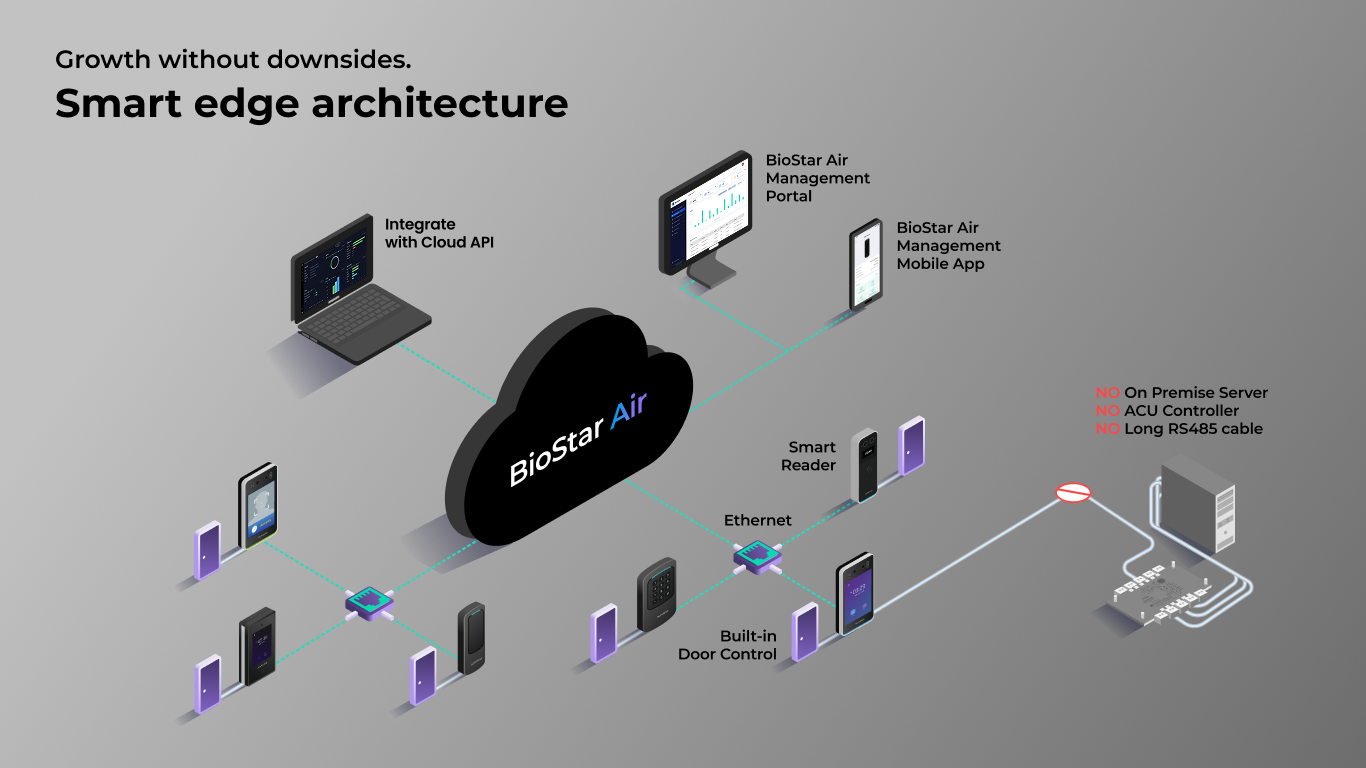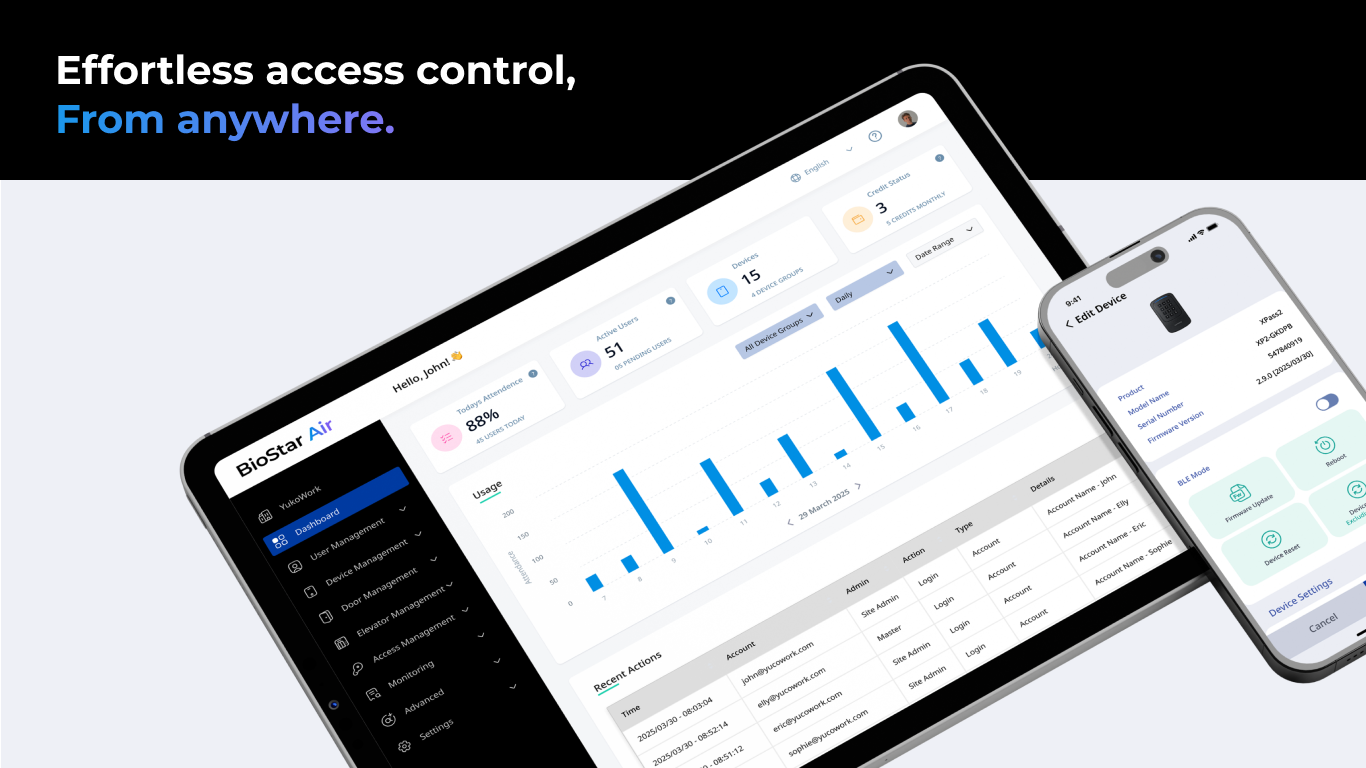- PRODUCTS
- Security Platform
- BioStar X | On-Prem SecurityNEW
- BioStar Air | Cloud Security
- BioStar 2
- Access Control
- Access Control Unit
- Biometric Readers
- RFID Readers
- Mobile Credential
- Peripherals
- Wireless Door Locks
- SOLUTIONS
- SUPPORT
- ABOUT
- device_hubHUB
- Latest press releases from Suprema

Suprema, a global leader in AI-powered access control and security solutions, officially announced the launch of BioStar Air, the first and only cloud-based access control platform designed to natively support biometric authentication. Featuring true zero-on-premise architecture, BioStar Air simplifies deployment and scales effortlessly to secure SMBs, multi-branch companies, and mixed-use buildings.
 [BioStar Air Architecture]
[BioStar Air Architecture]
First showcased at ISC West 2025, BioStar Air sets a new standard for cloud-based access control. Unlike traditional systems tied to on-premise servers and controllers, BioStar Air is built entirely in the cloud. Smart readers with built-in controllers connect directly to the network, streamlining installation, reducing infrastructure costs, and making it simple to scale across multiple locations.
A key innovation in BioStar Air is its native biometric support. By processing biometric data at the edge, the platform ensures fast, reliable authentication even during network outages. Thanks to its federated architecture, employees can use the same face or finger template company-wide. BioStar Air supports a wide range of credentials, including facial authentication, RFID cards, mobile access, and QR codes. Fingerprint recognition and Apple Wallet support are coming soon.
 [BioStar Air Dashboard]
[BioStar Air Dashboard]
Intuitive web and mobile interfaces give administrators the power to manage users and devices in real time from anywhere. Built for modern, distributed workplaces, BioStar Air helps organizations to centralize access control across multiple sites with minimal hardware, rapid onboarding, and uncompromising security.
“Building access control infrastructure can be overwhelming, with servers, controllers, and endless IT overhead,” said Hanchul Kim, CEO of Suprema Inc. “With BioStar Air, we’ve thrown all that out to deliver on our vision for the future of access control: cloud first, biometric-native, and effortless to scale. Organizations can finally gain the flexibility and confidence they need to secure today’s mobile, distributed workplaces.”











